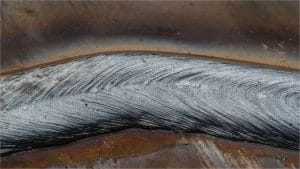What are the Welding Appearance Inspection Items?
Weld is the bonding part of a welded piece.
Weld can be generally divided into: flat weld, fillet weld, one-sided weld, one-sided weld double-sided shaped weld.
The welds can also be divided into butt welds and fillet welds according to their own cross-sectional forms.

Butt Welds: no penetration of the butt welds stress is very small, there is a serious stress concentration, penetration of the butt welds referred to as the butt welds.
Fillet Weld: the connection plate edge need not finish processing, plate seamless, weld metal directly filled in the two pieces of welding form right angle or bevel in the region.
The Weld appearance inspection can guide welders and welding inspectors to ensure the whole work and project welding quality.
Welding appearance inspection items
1. Various welding defects
Undercut: Groove or dent in base metal of weld toe due to improper welding parameters or incorrect operation.
Weld surface porosity: welding, the pool of bubbles in the solidification did not remove lead to residual, the formation of holes, which is the porosity.
Non-fusion: Weld between the bead and the wood (between the bead and the bead) , the incomplete fusion bonding part, and the incomplete fusion bonding part between the base metal and the base metal during spot welding.
Lack of penetration: the phenomenon of incomplete penetration at the root of the joint during welding.
Crack: the formation of new welds in which the local bonding of metal atoms in a welded joint is disrupted by a combination of welding stress and other brittleness factors. In general, features sharp notches and a large aspect ratio.
Undersoldered: this is the case in general due to insufficient filling of the metal, the formation of continuous or intermittent groove in the weld surface.
Welding tumor: in the welding process, molten metal flow to the weld outside the base metal without melting, resulting in the formation of metal nodules.
Burn through: in the welding process, molten metal from the back of the groove flow, forming a hole defect.
2. Various weld shape defects
Weld shape difference: when welding, the weld shape formed by condensation of liquid weld metal is called Weld Shape, weld shape difference is simply defined as weld appearance, weld height, width, weld ripple irregularity or even no wait.
Foot size: draw the maximum isosceles triangle in the cross section of the fillet weld, the length of the right-angled side, the defect is that the foot size is smaller than the design requirement and the foot size is different.
Excess height: excess height above requirement or below base material.
Leakage welding: the requirement of welding the weld without welding, the specific performance of the whole weld without welding, the whole weld parts without welding, not to fill the arc pit, Weld not to fill the weld, etc. .
In addition, there are spatter and arc abrasion and other weld shape defects.
3. Weld sanding
On the weld grinding, we have a common understanding, after grinding the weld to meet the inspection standards, Weld smooth transition or smooth transition with the base metal, can not destroy the base metal.
Learn more our project quality managemet, QAQC and third party inspection (TPI), NDT practices thru below link.-
